Stabilizing Art Space Globally
 Founded in 2013, San Francisco’s Community Arts Stabilization Trust (CAST), is focused on permanent, long-term art space solutions. Thanks to $5 million in initial seed funding from the Kenneth Rainin Foundation – followed by millions raised through private philanthropy – the nonprofit has been able to operate like a start-up and take risks that aim to “stabilize” cultural institutions. They began by securing property for two of SF’s long-standing contemporary arts organizations, CounterPulse and Luggage Store Gallery, which allows both to pay below-market rental rates, and gives them the opportunity to someday purchase their buildings.
Founded in 2013, San Francisco’s Community Arts Stabilization Trust (CAST), is focused on permanent, long-term art space solutions. Thanks to $5 million in initial seed funding from the Kenneth Rainin Foundation – followed by millions raised through private philanthropy – the nonprofit has been able to operate like a start-up and take risks that aim to “stabilize” cultural institutions. They began by securing property for two of SF’s long-standing contemporary arts organizations, CounterPulse and Luggage Store Gallery, which allows both to pay below-market rental rates, and gives them the opportunity to someday purchase their buildings.
In 2016, CAST spread into Oakland with an initiative called Keeping Space. A brainchild of the Oakland Arts Workspace Group, led by the Kenneth Rainin Foundation, Keeping Space granted six technical assistance awards to local organizations, and offered artists skill-building services.
“We quickly realized the lack of funding structures [in Oakland] really did create a landscape where we were seeing not just your traditional nonprofit, but more alternative business models to create art and maintain cultural vibrancy,” explains Tyese Wortham, CAST’s Director of Community Engagement. “There were a lot of hybrid for-profit, nonprofit groups. There were a lot of DIY artist collectives. [It takes] a lot of informalized structures to survive as artists in Oakland.”
With venues as dynamic as one that is a shoe store by day and a community organizing center by night, it became apparent that Oakland’s artist-led organizations, unlike their SF counterparts, desperately needed assistance with basic operational knowledge. Alongside NCCLF, CAST began offering one-on-one consultations and workshops, which covered issues like commercial real estate, budgeting, and general finance tips.
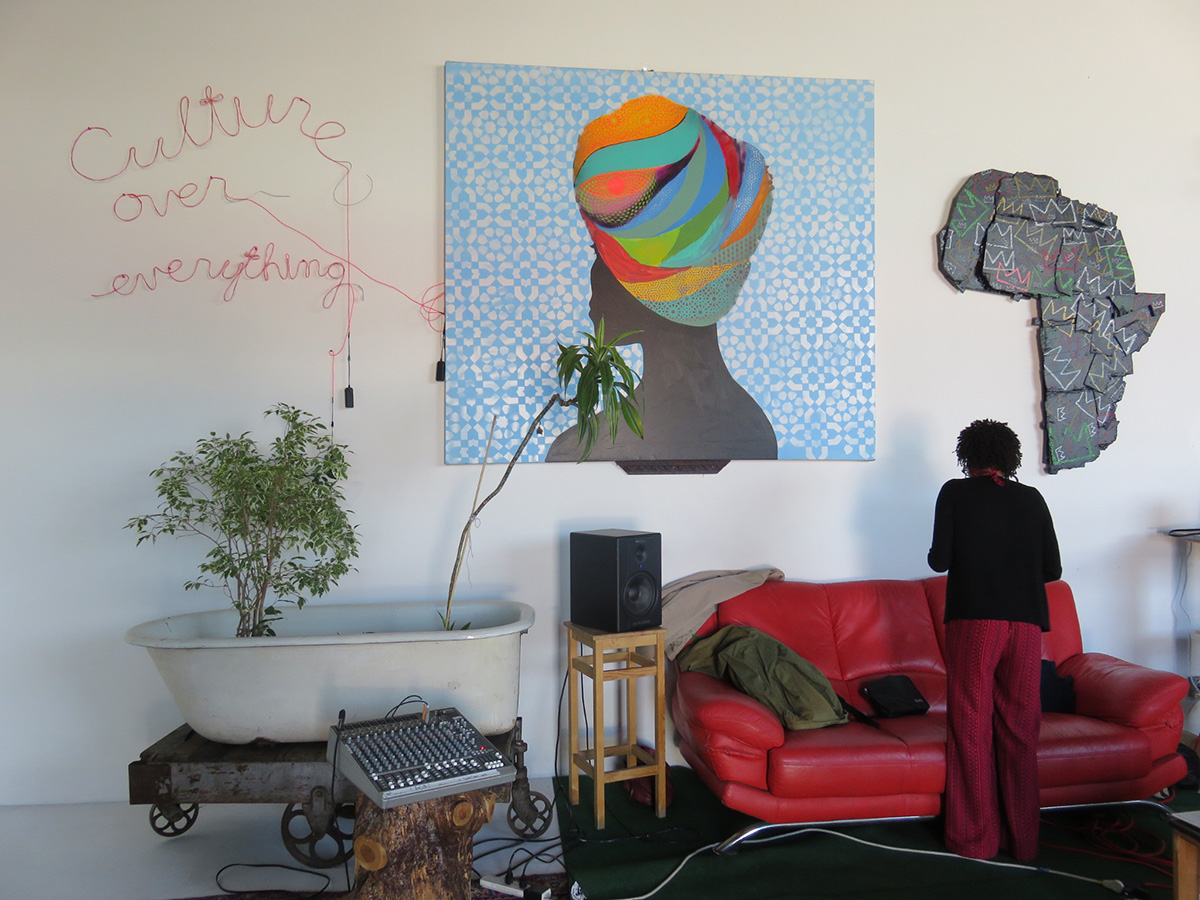
Alena Museum, a recipient of CAST’s Financial Assistance Program. (Credit: Marlana Donehoo)
Shortly thereafter came Keeping Space’s Financial Assistance Program.
“We were able to offer over $350,000 to working arts, cultural organizations, and collectives who were seeking funds for their acquisition or planning projects,” says Wortham. Anything that posed a threat to the security of a space was eligible, including facility improvement projects like code and safety permits, as well as basic expenses like rental stipends and moving costs.
CAST allowed DIY organizations to apply, but the rollout was not without its hiccups. Their initial application process, which may have been standard procedure for larger nonprofits, proved far too taxing for many of Oakland’s scrappy and informal groups, who had neither the access to numbers and data, nor the resources or capacity to easily compile them.
The grassroots arts community pushed back – and to CAST’s credit, they shifted their requirements. Eventually, 14 diverse organizations were awarded funds, including another hybrid cultural and residential space, the 30th & West Live/Work Community Arts Center, EastSide Arts Alliance, and Peacock Rebellion.
“We were able to get to Oakland at a time where… there was certainly displacement happening, but we were able to keep many, many groups in their spaces instead of them being forced to relocate,” notes Wortham.
CAST’s experience in Oakland highlighted the disconnect between high-level organizations and artist communities, as well as the limitations of the nonprofit industrial complex, which CAST’s Executive Director, Moy Eng, says has been highly influenced by the Ford Foundation’s way of giving since the ’50s.
“We at CAST have a particularly distinct opportunity at this moment in time,” says Eng, “to not only continue our work in figuring out ways that are agile, smart, or strategic; to save and keep the distinct creativity that we know is Oakland… We also have an opportunity to figure out newer ways in which to support and serve artists that are creating hybrid structures – more entrepreneurial structures that do not look like the structures that we know.”
More than a dozen cities from around the world have now looked to CAST for advice – including London, which is in the process of replicating a similar organization under the name Creative Land Trust, as well as Nairobi, Kenya, and Auckland, New Zealand. Within the United States, cities that have sought advice include Minneapolis, Seattle, Portland, Austin, New York, and Denver. The key to CAST’s success, Eng stresses, lies in their dynamic organizational structure.
“We’re pulling together a number of mechanisms: public and private sectors; financial mechanisms that are recognizable and have come from models in the environmental movement, in terms of land trusts, the affordable housing sector, and arts and culture,” she explains, stressing that the model also allows CAST to pull in “essential leadership across sectors.”
“CAST works with the city, with philanthropists, with our nonprofit intermediary partners, and with real estate developers to tackle this problem. And they are at the table. Not just in a transaction… [but] in conversation. It places CAST – and much less CAST, but arts and culture – at the table, in critical moments.”
– Artist Space Development: Making the Case, Urban Institute, 2007

CAST’s Executive Director Moy Eng presenting at Square Feet Seattle. (Credit: Jenny Crooks)
Investing in the Long Game
In May 2017, the City of Seattle’s Office of Arts & Culture (ARTS) published The CAP Report, which contained “30 Ideas for the Creation, Activation, and Preservation of Cultural Space” within the city. It was a continuation of a 2009 report published by the Cultural Overlay District Advisory Committee (CODAC), whose mission was to: “Devise creative ideas for long-term promotion and preservation of cultural, arts, and entertainment activities and spaces in Seattle neighborhoods, then transform those ideas into recommendations the Council can consider implementing through ordinance and budget authority, beginning with Capitol Hill.”
Amongst CODAC’s six recommendations was the creation of a Cultural Space Liaison role within ARTS. Held by Matthew Richter, the post is the first of its kind in the country and empowers the office with 40 hours a week dedicated to creating solutions around cultural space. That includes The CAP Report, which has since been closely adapted by Portland, Seattle’s Northwest sister city to the south.
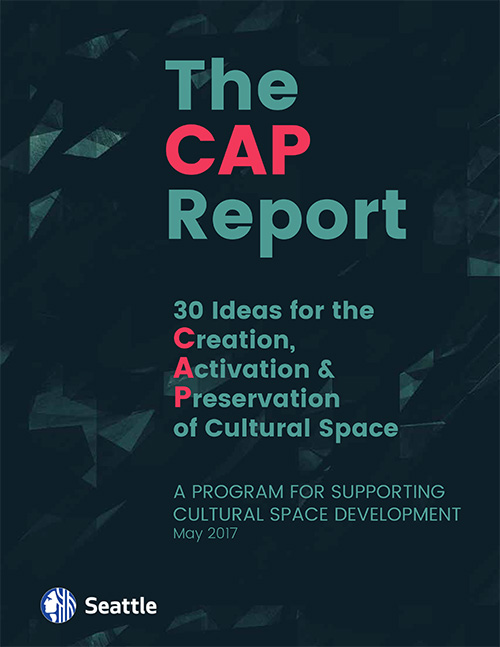 CODAC also spawned the Cultural Space Seattle conferences, which began around 2011. They assembled a wide range of individuals, from artists and cultural organizations to developers, bankers, and city leaders, with the purpose of collectively brainstorming how they might support one another’s needs. While the meetings undoubtedly left out key segments of the artistic community, they generated many successful ideas – some of which came to be incorporated in The CAP Report, six years later.
CODAC also spawned the Cultural Space Seattle conferences, which began around 2011. They assembled a wide range of individuals, from artists and cultural organizations to developers, bankers, and city leaders, with the purpose of collectively brainstorming how they might support one another’s needs. While the meetings undoubtedly left out key segments of the artistic community, they generated many successful ideas – some of which came to be incorporated in The CAP Report, six years later.
Wide and varied, The CAP Report focuses on changes related to building codes, individuals, public policy, and much, much more. A number of its solutions work with new developments, by increasing height restrictions or offering tax incentives for cultural spaces; others work with older spaces, by allowing for rooftop venues or granting temporary occupancy permits for vacant buildings.
However, very few of its solutions are “quick fixes,” which can make them easy to downplay until their impacts become clear. The report’s designation of arts districts has certified neighborhoods through building plaques and special street signs, but even that can feel complicated. Capitol Hill may be Seattle’s most “successful” district, but not all residents agree with how the neighborhood has developed.
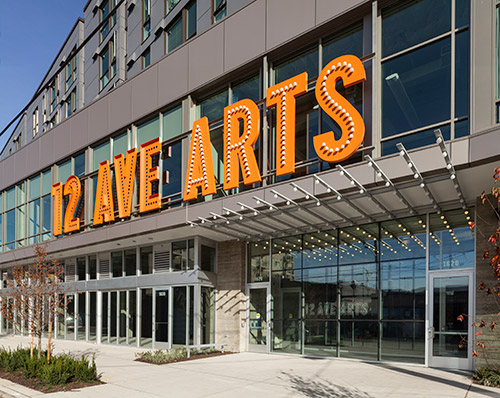 Nonetheless, while Capitol Hill has lost many venues, it has also managed to retain some of the city’s most significant performative spaces, music venues, and movie theaters. Also compelling is Capitol Hill Housing’s 12th Ave. Arts project – a centrally-located building that combines 88 units of affordable housing with permanently affordable cultural space, plus ground-floor retail that houses local restaurants.
Nonetheless, while Capitol Hill has lost many venues, it has also managed to retain some of the city’s most significant performative spaces, music venues, and movie theaters. Also compelling is Capitol Hill Housing’s 12th Ave. Arts project – a centrally-located building that combines 88 units of affordable housing with permanently affordable cultural space, plus ground-floor retail that houses local restaurants.
“That was not an easy project to pull off, but there should be one of those in every neighborhood in the city,” says Randy Engstrom, Director of the Office of Arts and Culture. “We talk a lot in this city about how much we need affordable housing, but the reality of building those projects – utilizing city, state, and federal tax credits and funding mechanisms – is incredibly complicated, and it takes a really long time to do.”
“That project took ten years,” he continues. “Most affordable housing projects take about five. The scale of the challenge, and how fast we can respond, are a little bit out of sync in that way.”
His statement echoes one scenario, where Richter and Carol Rashawnna Williams, a visual artist and the Program Administrator of Historic Central Arts and Culture District (HCAACD), met with staff from Vulcan, the Paul Allen-owned company responsible for several new constructions and arts events around town.
Located in the heart of the once predominantly African-American Central District, Vulcan’s construction of Midtown Center on 23rd Ave. and Jackson St. has been hotly contested, inspiring groups like the Artist Coalition for Equitable Development (ACED) to mobilize. In September 2017, over seventy artists co-signed an open letter to Allen, calling for him to consider how his commitment to supporting artists and musicians via his music festival, Upstream, did not translate to supporting those same individuals long-term. Amongst ACED’s five recommendations were for Vulcan to build out artist spaces and more affordable housing units than they were required to.
In response, Vulcan offered ACED free passes to a portion of Upstream. Richter and Williams, on the other hand, were able to meet face-to-face with Vulcan to discuss the future of Blackzone, a community artspace run by HCAACD, which has since been torn down.
“We set up this meeting to talk about, ‘What happens after this building comes down and a new one goes up? What’s the potential for working together on space issues beyond that?'” recalls Richter. “We were talking about the potential of a commercial condo situation where the arts district could essentially buy space and Vulcan, as the developer, could seller-finance it.”
Richter and Williams eventually learned that Vulcan had offered Blackzone the space two years prior, but because it was before HCAACD had hired Williams as their Program Administrator, the small organization had lacked the capacity or knowledge to pursue the offer. By the time they changed their minds two years later, it was too late. Construction was about to begin, and the spaces had already been designed and zoned for retail.
“Readiness in this community is really key, and [timelines tend] to not sync up,” explains Richter. “In the grand scheme of history, the fact that the arts district and Vulcan missed each other by 18 months is kind of tragic.”

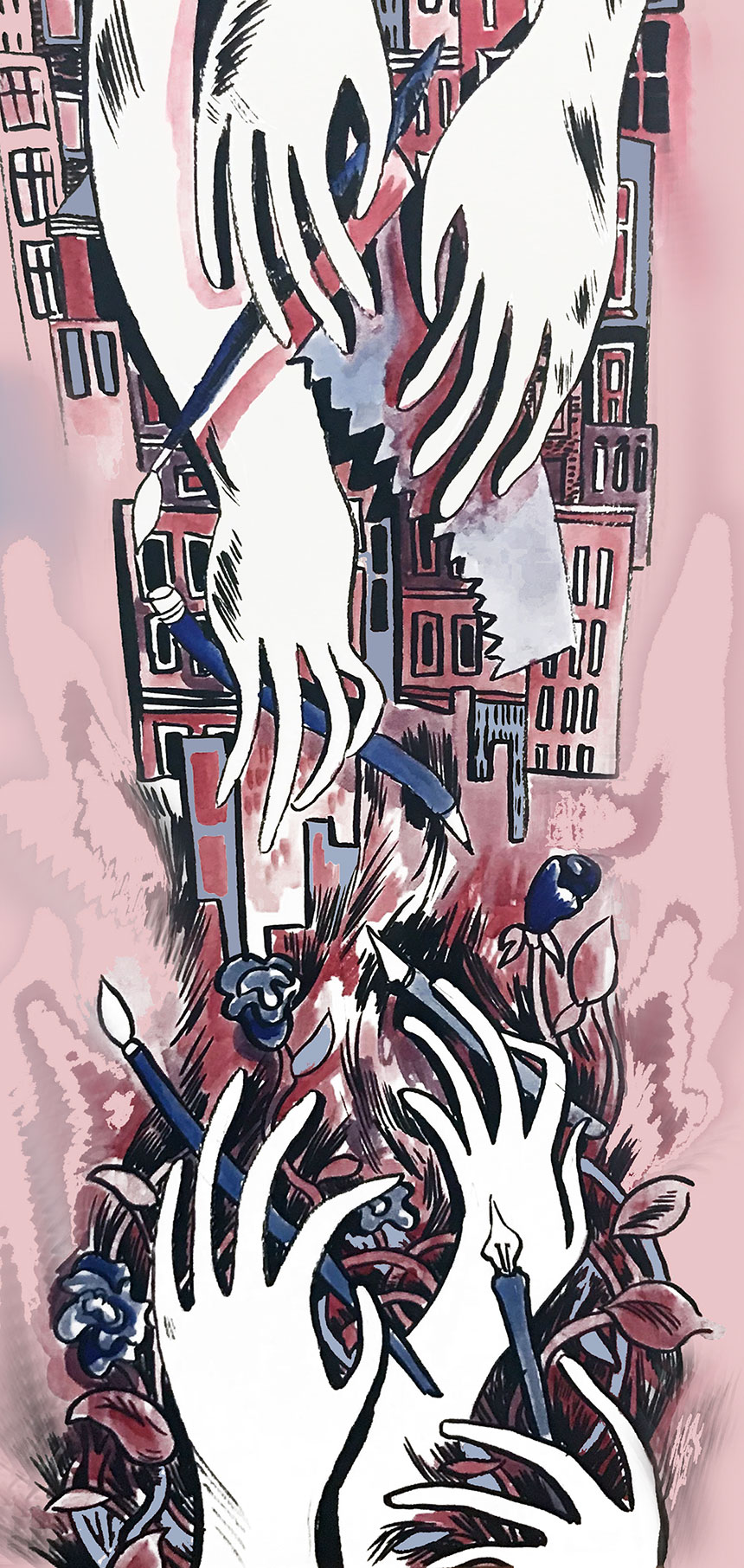

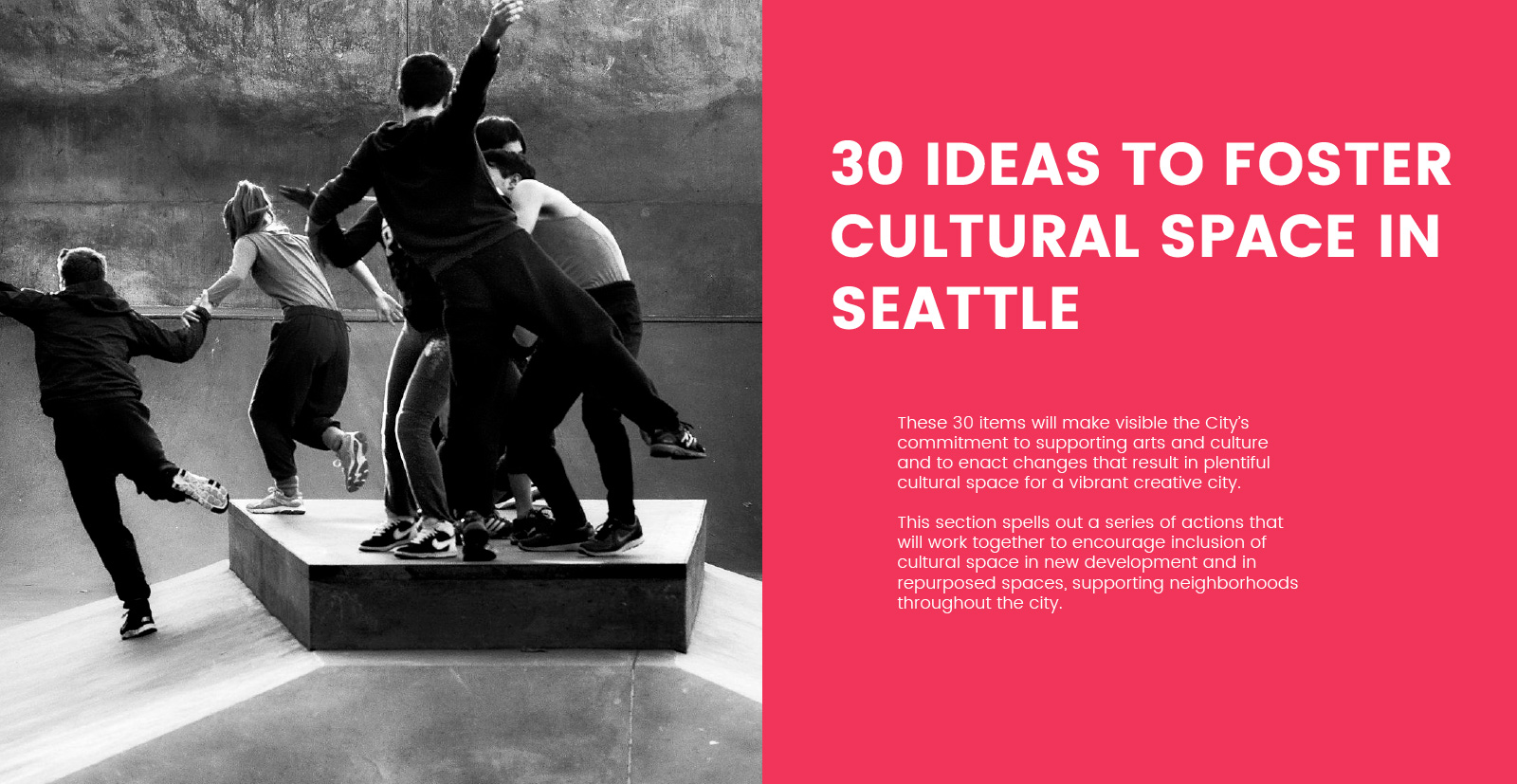
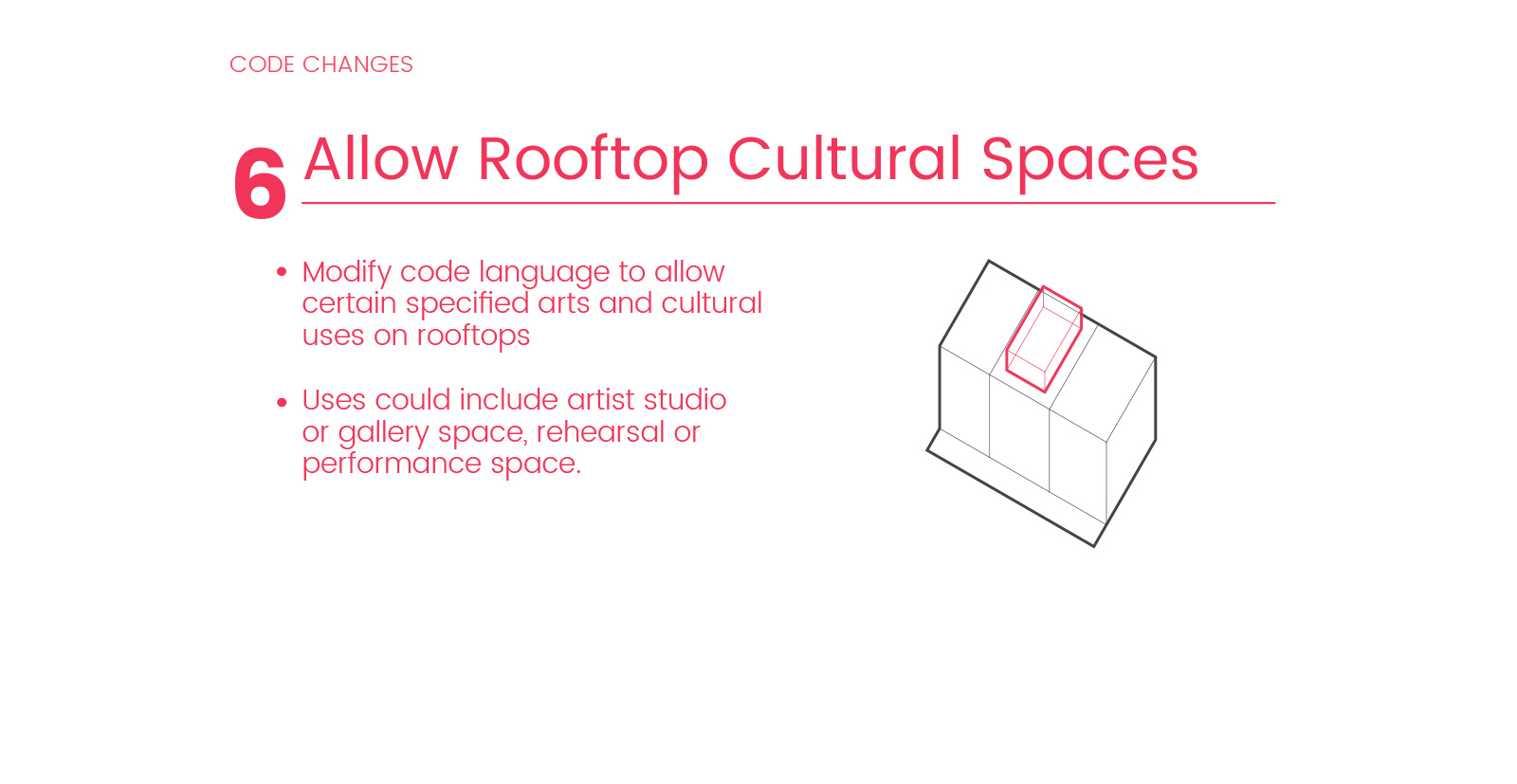





[…] A United Cultural Front, Part 1: Models of Space Preservation & Creation from Oakland & Seat… via REDEFINE (2018 Article) […]